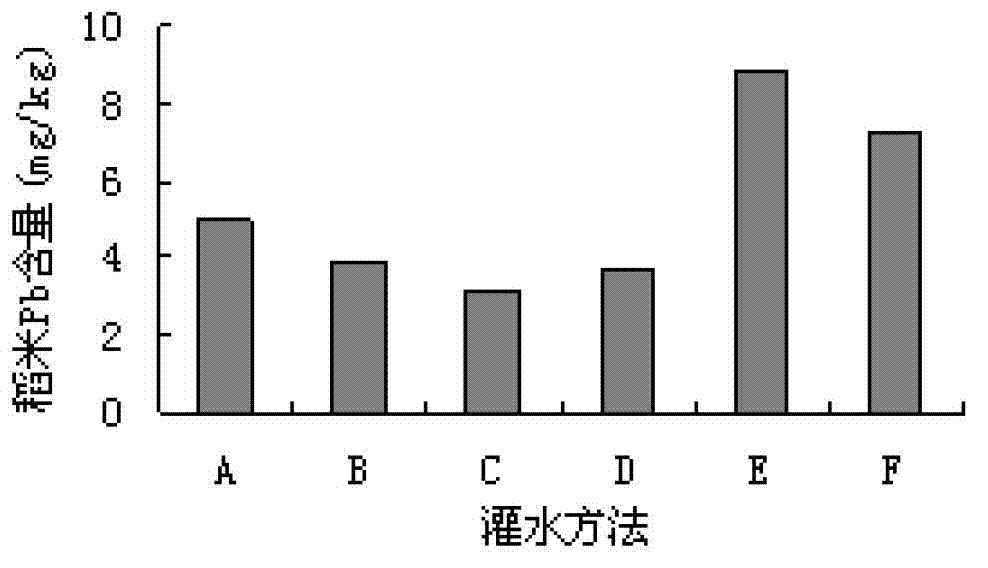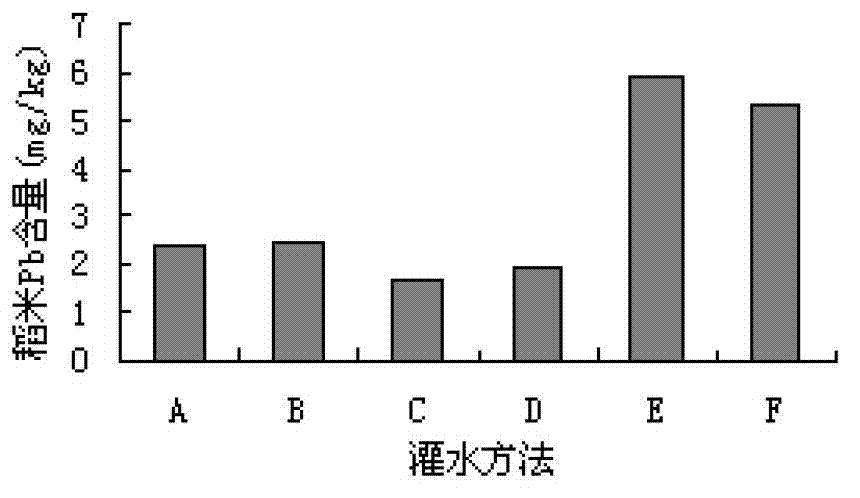Paddy field irrigation method for reducing lead content of paddy
A technology of lead content and paddy fields, applied in the field of paddy field irrigation, can solve the problems of lack of science, decline of rice yield, increase of toxic and harmful substances in rice absorption, etc.
- Summary
- Abstract
- Description
- Claims
- Application Information
AI Technical Summary
Problems solved by technology
Method used
Image
Examples
Embodiment Construction
[0027] A paddy field irrigation method for reducing lead content in rice, carried out according to the following steps:
[0028] (1) Water control period: Water control during the transplanting of live rice trees to the peak tillering period (7-40 days after transplanting seedlings), flood irrigation in other periods, and maintain a water layer of 5-10 cm. Compared with flood irrigation during the whole growth period of rice, the rice yield did not decrease significantly (about 5%-6%), and the Pb content of rice decreased by 28.4%-43.8% (see attached Figure 1-4 ). If water is controlled at other periods before heading, rice yield will be significantly reduced (yield decreases by 12%-20%), if water is controlled after heading, rice Pb concentration will be significantly increased (rice Pb content will increase by 38.4%-147.7%) (see attached Figure 1-4 ).
[0029] (2) Degree of water control: mild water control. From the appearance of the soil, the topsoil began to harden,...
PUM
 Login to View More
Login to View More Abstract
Description
Claims
Application Information
 Login to View More
Login to View More - R&D
- Intellectual Property
- Life Sciences
- Materials
- Tech Scout
- Unparalleled Data Quality
- Higher Quality Content
- 60% Fewer Hallucinations
Browse by: Latest US Patents, China's latest patents, Technical Efficacy Thesaurus, Application Domain, Technology Topic, Popular Technical Reports.
© 2025 PatSnap. All rights reserved.Legal|Privacy policy|Modern Slavery Act Transparency Statement|Sitemap|About US| Contact US: help@patsnap.com



